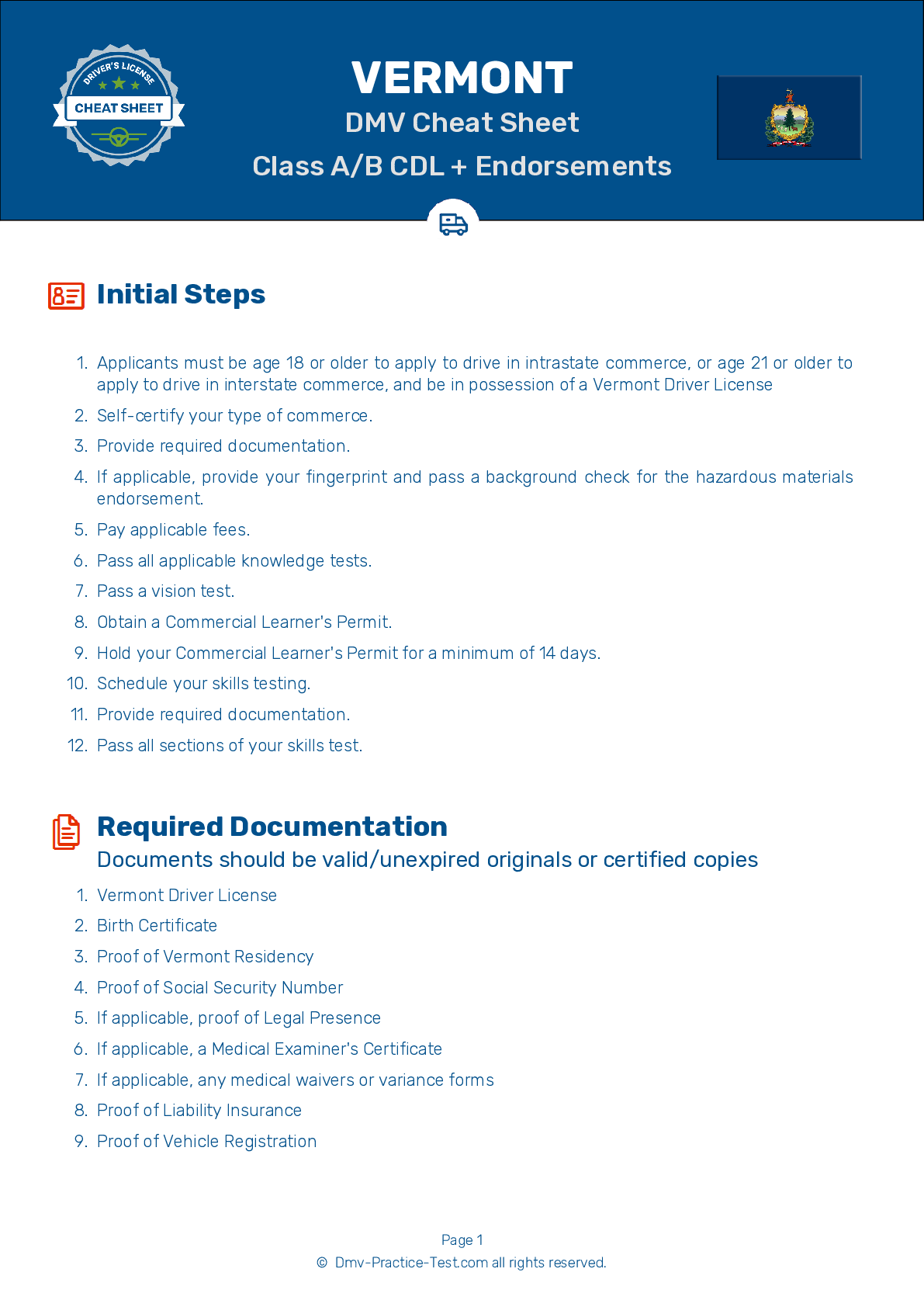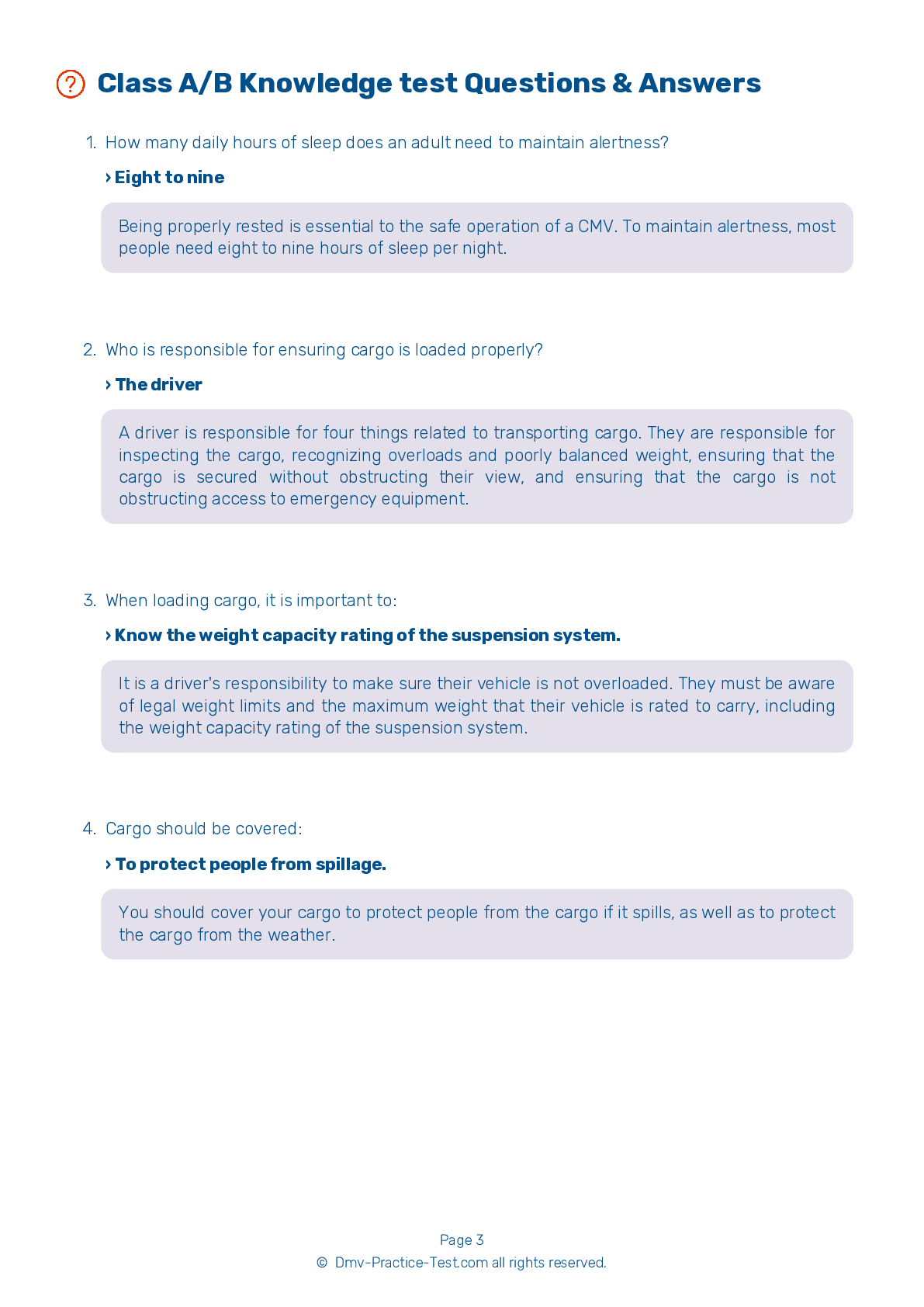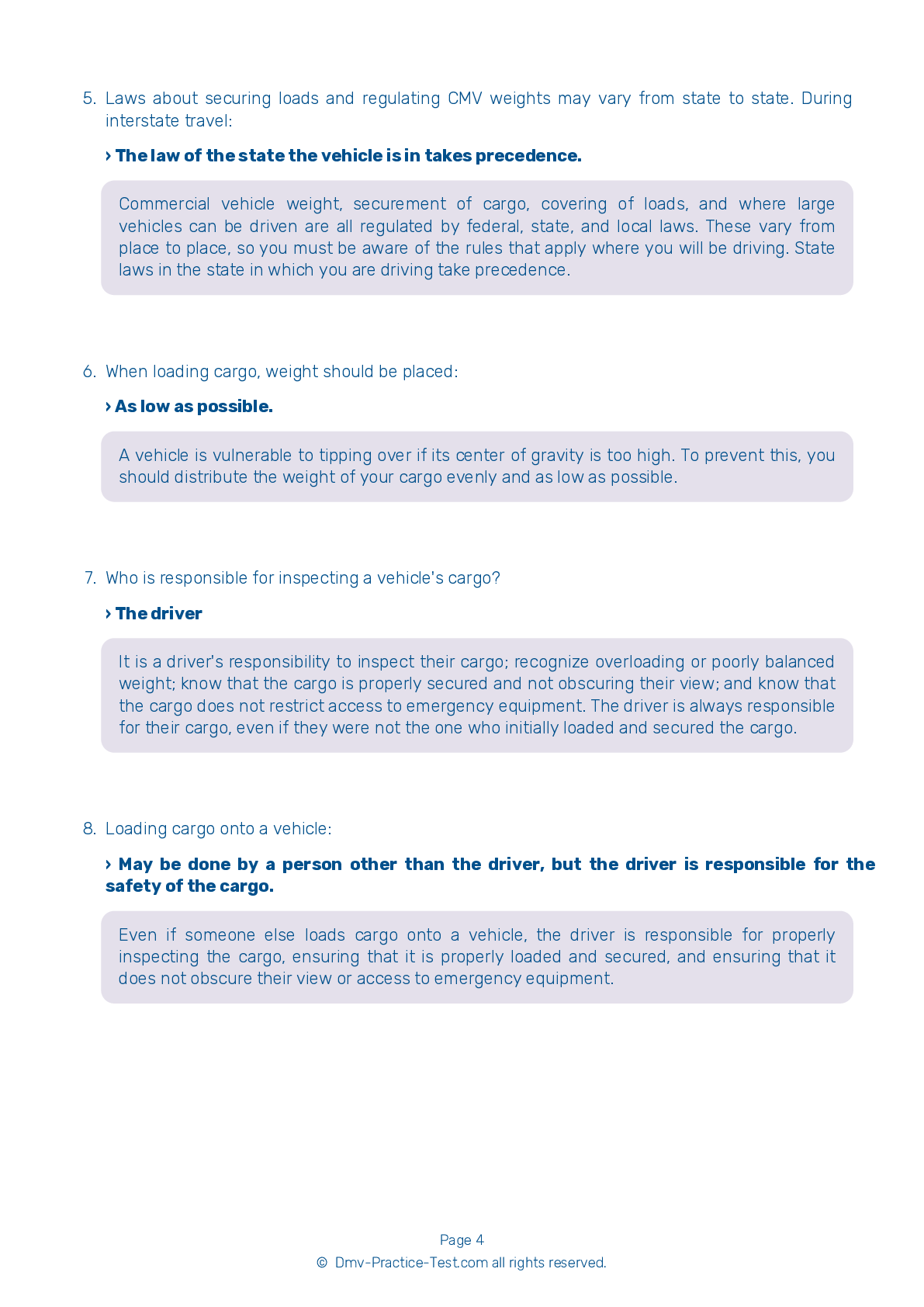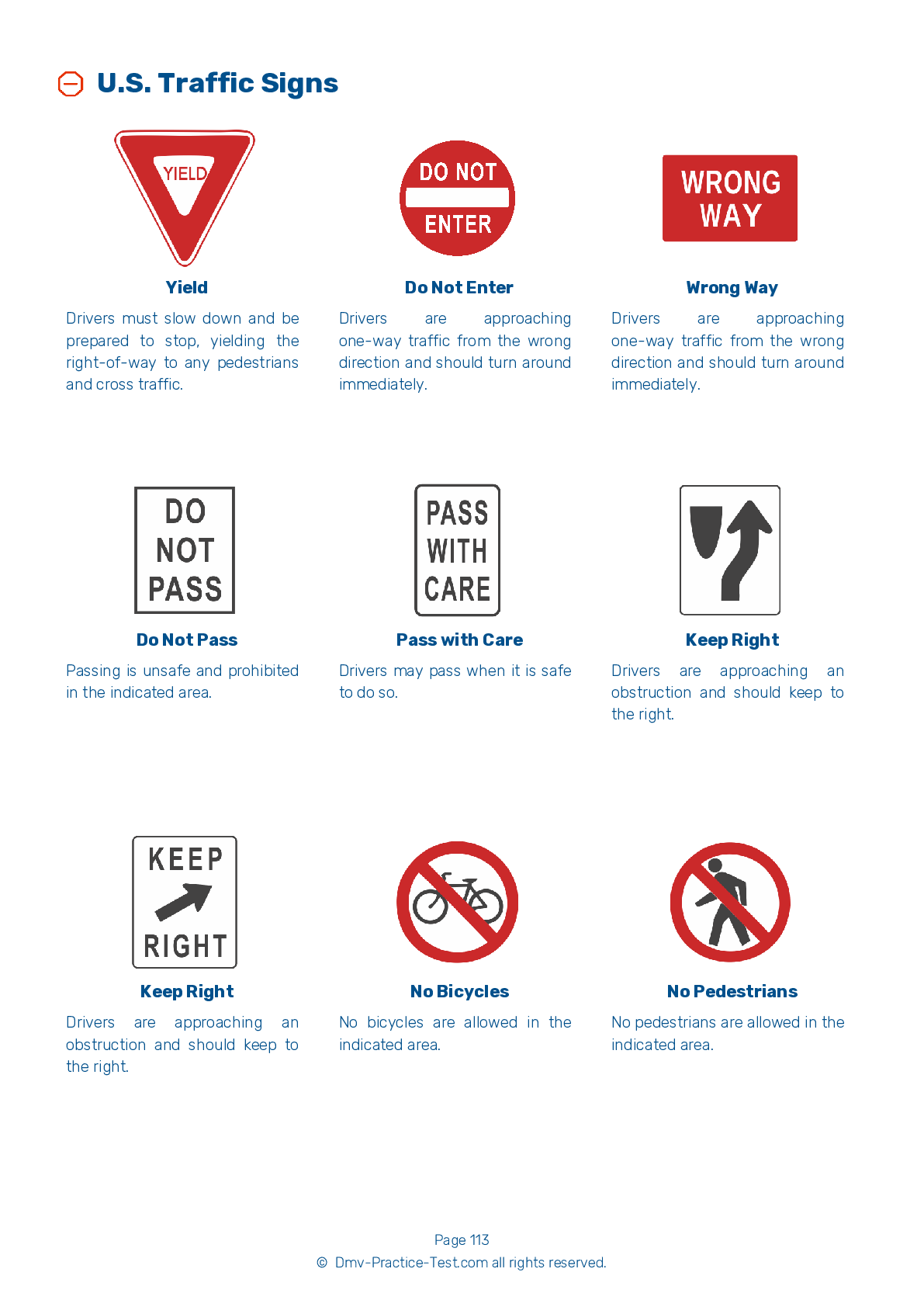Tank Endorsement Test | Vermont 2025 #1
Train for FREE with our Vermont tank endorsement practice test online. The official exam test consists of several obligatory parts, with all of them checking your knowledge of different blocks of road rules. If you need to obtain a VT tank license in 2025, practice as much as possible. Free sample tests published on our website will help you check and improve your knowledge and boost your grades. Please bear in mind that DMV requirements for issuing a CDL tank vehicle endorsement may vary from state to state.
1 . If you must leave the roadway and drive on the shoulder in an emergency situation, you should:
If you must drive onto the shoulder to avoid a hazard, stay on it until you come to a stop; then signal, check your mirrors, and merge back into traffic. Avoid braking on the shoulder at speeds higher than about 20 mph. To help maintain control, always keep one set of wheels on the pavement, if possible.
2 . When in heavy traffic, the safest driving speed is:
In heavy traffic, it is safest to travel at the same speed as other vehicles. If two vehicles continue to drive in the same direction at the same speed, they cannot hit each other.
3 . Rust around wheel nuts may mean:
Rust around wheel nuts can indicate that the nuts are loose. If you find rust near the wheel nuts, check their tightness before beginning to drive.
4 . When it’s difficult to see, such as at dawn or dusk, a driver can increase their vehicle's visibility by:
When driving at dawn, at dusk, or in inclement weather, you should use your headlights on their low beam setting to increase your visibility.
5 . Backing with a trailer is dangerous because:
Backing is always dangerous because it is impossible to see everything that is behind your vehicle. Only drive in reverse if it is absolutely necessary.
6 . If you press the tractor air supply control and your trailer's spring brakes do not release, you should:
It is important that all of a vehicle's equipment is in proper working condition before beginning a trip. If a trailer's spring brakes do not release when you push in the tractor air supply control, you should make sure the air line connections are properly attached and sealed.
7 . Talking on a hands-free phone while driving:
While speaking on a hands-free phone while driving is less dangerous than speaking on a hand-held phone, it is just as likely to mentally distract a driver. Simply engaging in conversation takes their mental focus away from the task of driving.
See the exact questions that will be on the 2025 Vermont DMV exam.
99.2% of people who use the cheat sheet pass the FIRST TIME
Lillian MCcranie explains how our CDL study guide was helpful in passing the exam and recommends it to everyone.
Cameron tells us how he purchased the CDL exam, and found it to be a useful tool which helped him pass the exam and find a job.



